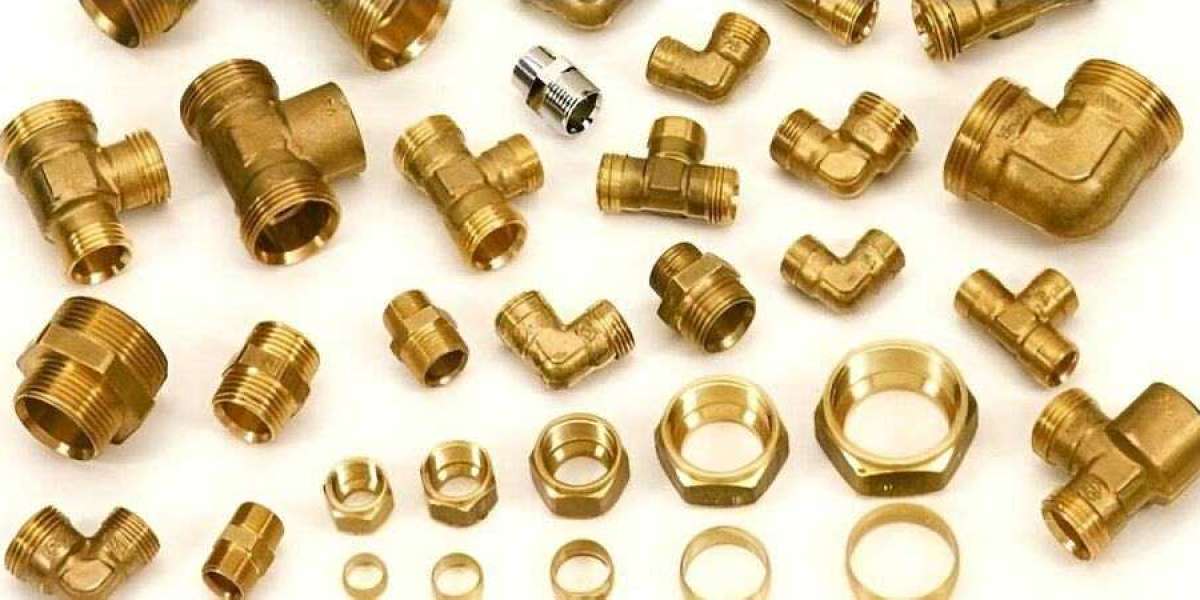Leaks in brass fittings are a common issue in plumbing, gas, and industrial applications. These fittings, widely used for their durability, corrosion resistance, and ability to withstand high pressures, can still develop leaks due to a variety of reasons. Whether you are a seasoned professional plumber or a DIY enthusiast, knowing how to troubleshoot and address leaks in brass fittings is essential to maintaining a safe and functional system. In this article, we will explore the causes of leaks, how to diagnose them, and the steps you can take to troubleshoot and repair them effectively.
Understanding Brass Fittings
Brass is an alloy primarily made of copper and zinc, and it is known for its strength, resistance to corrosion, and excellent machinability. These characteristics make brass a popular material for plumbing fittings, valves, and connectors. Brass fittings are used in a variety of applications, such as:
Plumbing systems: for connecting pipes in residential and commercial buildings.
Gas lines: to ensure safe transportation of natural gas or propane.
HVAC systems: for managing heating and cooling systems.
Industrial applications: in machinery and equipment where high durability is required.
While brass fittings are robust, their integrity can be compromised by various factors, leading to leaks. Leaks, if left unaddressed, can result in water damage, loss of pressure, energy inefficiencies, and even hazardous situations, such as gas leaks. Thus, troubleshooting and resolving leaks in brass fittings is a critical task.
Common Causes of Leaks in Brass Fittings
To troubleshoot a leak, you must first understand the various causes that can lead to it. These causes can stem from improper installation, material defects, environmental factors, or wear and tear over time. Below are some of the most common causes of leaks in brass fittings:
Incorrect Installation:
Over-tightening or under-tightening: Both over-tightening and under-tightening the brass fittings can cause leaks. Over-tightening can distort the threads and create stress on the fitting, leading to cracks or deformation. Under-tightening, on the other hand, leaves the connection loose, allowing fluid or gas to seep through the gaps.
Improper sealing: Brass fittings often require the use of sealing compounds, such as Teflon tape or pipe dope, to prevent leaks. If these materials are not applied correctly or if they are omitted altogether, leaks can occur.
Misalignment of threads: Brass fittings typically rely on threaded connections to secure the pipes. If the threads on either the fitting or the pipe are misaligned, they may not form a tight seal, resulting in leaks.
Thread Damage or Wear:
Corrosion and degradation: Over time, brass fittings may corrode due to exposure to water, air, or chemicals, especially in harsh environments. Corrosion weakens the threads and can cause them to wear down, making it difficult to achieve a proper seal.
Stripped threads: If the fitting or pipe threads become stripped, they will no longer create a proper seal. Stripped threads can occur due to over-tightening, incorrect installation, or prolonged exposure to high-pressure environments.
Cracks in the threads: Cracks or fractures in the brass fitting itself, especially around the threads, can result in leaks. These cracks are often caused by excessive stress on the fitting, thermal cycling, or age-related wear.
Incompatible Materials:
Using the wrong type of sealant: Brass fittings are often paired with specific types of sealants. Using the wrong type of sealant or incompatible materials can lead to chemical reactions that break down the sealant, causing leaks.
Galvanic corrosion: When brass is paired with dissimilar metals, such as steel or aluminum, galvanic corrosion can occur. This process accelerates the degradation of the materials, leading to leaks.
Physical Damage:
Impact or force: Brass fittings are durable, but they can still be damaged by external forces. Dropping, hitting, or striking a brass fitting can cause it to deform, crack, or weaken, which can result in leaks.
Thermal expansion and contraction: Brass fittings are subject to expansion and contraction due to temperature fluctuations. This can cause the seal to loosen over time, potentially leading to leaks. This is especially problematic in systems that experience frequent temperature changes, such as HVAC or water heating systems.
Pressure Issues:
Excessive pressure: Brass fittings are rated for specific pressure limits. If the system exceeds these limits, it can put excessive stress on the fittings and cause them to leak. In plumbing systems, water pressure that is too high can cause fittings to weaken or crack. In gas lines, over-pressurization can result in hazardous leaks.
Pressure surges or fluctuations: Even if the system pressure is within the normal range, pressure surges or fluctuations can cause stress on the fittings. These changes can result from issues like water hammer, pump cycling, or sudden pressure drops.
Environmental Factors:
Corrosive environments: Brass fittings used in environments with high humidity, saltwater, or exposure to chemicals are more prone to corrosion and wear. For instance, fittings in marine applications are especially vulnerable to saltwater corrosion, which can cause leaks.
Temperature extremes: Brass fittings may expand or contract due to extreme temperatures. While brass has a relatively low coefficient of expansion, it can still be affected by temperature changes. If the system is not properly designed to accommodate these changes, leaks can occur.
Troubleshooting Leaks in Brass Fittings
Once you've identified the potential causes of leaks in brass fittings, the next step is to troubleshoot the issue systematically. Here's a step-by-step guide to help you diagnose and address the problem:
Shut Off the System: Before you begin troubleshooting, always ensure that the system is turned off. This is crucial for safety, particularly in gas lines or high-pressure systems. Turn off the water supply or gas supply to the affected area and release any residual pressure from the pipes.
Inspect the Fitting and Pipe Connection: Begin by visually inspecting the brass fitting and the pipe connection. Look for obvious signs of damage, such as cracks, dents, or corrosion. Check the threads on both the fitting and the pipe for any visible damage. If the threads are stripped or worn down, the fitting will likely need to be replaced.
Check for Leaks with Water or Air: Once you have inspected the fitting visually, turn the water or gas supply back on and observe the connection for leaks. If the leak is minor, you may be able to detect it by looking for a drip of water or a hissing sound from gas escaping.
For water leaks: If you are dealing with water lines, you can use a dry cloth to wipe the fitting and then observe if any moisture reappears. This can help you pinpoint the exact location of the leak.
For gas leaks: Use a soapy water solution to coat the area around the fitting. If there is a gas leak, you will see bubbles forming at the leak site.
Tighten the Fitting: If you suspect the leak is due to loose threads, try tightening the fitting using a pipe wrench. Be careful not to overtighten it, as this can cause further damage. Ensure that you are tightening the fitting in a clockwise direction to avoid damaging the threads.
Check the Sealant: If the fitting uses a sealant, such as Teflon tape or pipe dope, check to see if it is still intact and properly applied. If the sealant has deteriorated or been applied incorrectly, you may need to remove the old sealant and reapply it. Make sure you are using the appropriate sealant for the type of fitting and the material it is paired with.
Replace the Fitting: If the fitting is severely damaged, corroded, or has cracked threads, it may need to be replaced. To replace the fitting, carefully remove the damaged fitting using a pipe wrench, and then install a new one. Ensure that the new fitting is of the correct size and type for the system, and apply fresh sealant before tightening.
Test the System Again: After replacing the fitting, turn the system back on and observe the connection for leaks. If the leak has been resolved, the system should function normally without any signs of water or gas escaping. If the leak persists, double-check your work to ensure that the fitting is installed correctly and that no other issues are present.
Consider Upgrading Fittings: If leaks are a recurring issue, it may be time to consider upgrading the brass fittings to higher-quality materials or different types of fittings. For example, if you are working in a high-pressure or corrosive environment, you may want to consider using stainless steel or plastic fittings that are more resistant to wear and tear.
Preventive Measures to Avoid Leaks in Brass Fittings
Preventing leaks in brass fittings begins with proper installation and maintenance. Here are some tips to help you minimize the risk of leaks:
Use the correct tools: Always use the right tools for tightening and loosening brass fittings. Avoid using excessive force when tightening the fitting to prevent over-tightening and damage to the threads.
Regular inspection: Periodically inspect brass fittings for signs of wear, corrosion, or damage. Early detection of issues can help prevent leaks from becoming serious problems.
Use compatible materials: Ensure that all materials, such as sealants and thread compounds, are compatible with brass fittings. Using incompatible materials can lead to leaks and damage.
Install pressure regulators: To prevent over-pressurization of the system, install pressure regulators where applicable. This can help reduce the risk of leaks caused by excessive pressure.
Proper storage: If you are storing spare brass fittings, keep them in a dry, cool place to prevent corrosion. Store them away from chemicals that could degrade the material.
Conclusion
Leaks in brass fittings can be caused by a variety of factors, including incorrect installation, material degradation, and environmental influences. Troubleshooting these leaks involves carefully inspecting the fitting, tightening the connection, and addressing any underlying issues such as corrosion or damaged threads. By understanding the common causes of leaks and following a systematic approach to diagnosis and repair, you can effectively resolve leaks and ensure the continued reliability of your plumbing, gas, or industrial systems. Additionally, preventive maintenance and using high-quality fittings and materials can help minimize the risk of leaks and prolong the life of your brass fittings.








